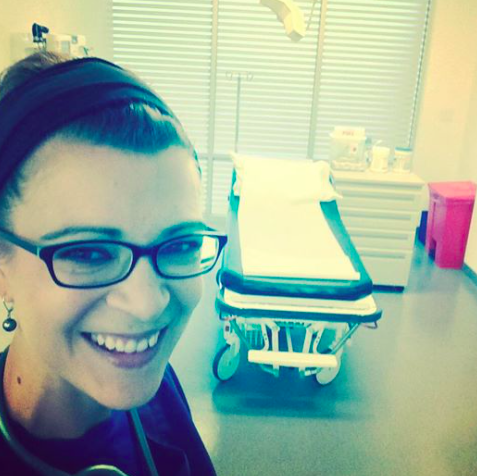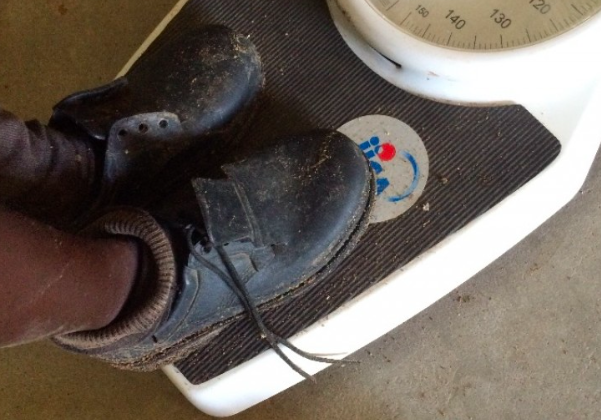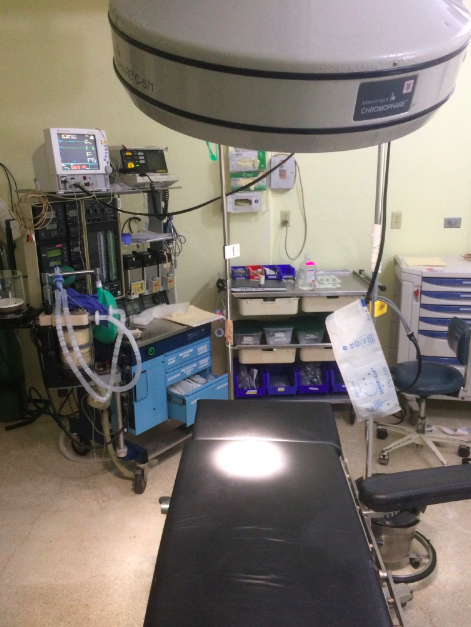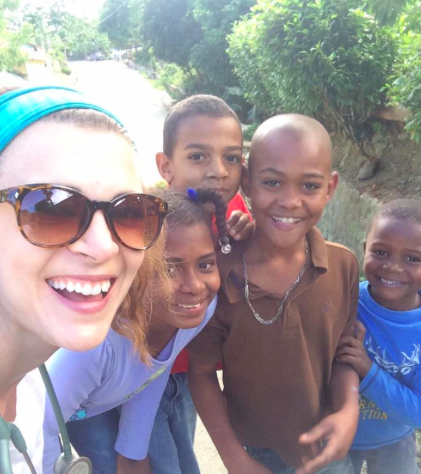returning from the dominican republic: drastically different and so much the same
The Saturday after Thanksgiving, I headed to the Santo Domingo airport to fly home. I had a layover in Panama City, and that flight was rescheduled, so after a 15-hour delay (that included trying to sleep on a grimy, drafty airport floor), I finally arrived home to San Francisco. The following day, I went back to work.
In addition to writing and speaking, I work a few shifts a month as a physician assistant for an urgent care clinic in downtown San Francisco.
Still feeling the effects of the 4-hour time difference between the Dominican Republic and California, I upgraded my Starbucks order from a grande to a venti coffee, and walked two blocks from the coffee shop to the clinic.
I stood across from the clinic, waiting for the light to change so I could cross the street, and suddenly the disparity of the medical care in the DR and the U.S. struck me.
After walking down dusty roads, caring for patients in their one-room wooden shelters and working in an operating room where one person was assigned the fly swatter to keep insects, spiders and lizards off the operating table, it was surreal to be looking at the SF clinic, where we have eight large exam rooms with state-of-the-art medical equipment, an on-site pharmacy, I.V.'s, nebulizers, EKG machines, digital X-rays, sutures, splints and bandages.

How do two such disparate conditions exist on the same planet, in the same hemisphere? I wondered.
As I continued to wait for the light to change, a charter bus pulled up in front of the clinic. Every week day, from 6 a.m. until 10 a.m., a bus pulls up to the bus stop front of our clinic to take Google employees to their headquarters, about an hour from downtown. The buses are equipped with WiFi, so as soon as the Google employees step on the bus, they're expected to log in and begin working.
In a day, I went from being woken up by squawking roosters at 4 a.m. to living in one of the most tech-savy areas in the world.
I went from rusty, rattling buses to charter buses offering first class amenities to Google employees.
I went from caring for patients in Elias Pina, the poorest DR province that borders Haiti, to caring for patients in the U.S.'s most expensive city.

I went from volunteering with a non-profit that's pinching pennies to working at a well-funded company that offers 401 (k) plans, generous compensation -- and even has a company Uber account that clinicians can use to travel between our four downtown locations.
The light changed, I crossed the street, changed into scrubs and a white coat, and started my shift.
Over the course of the morning, I treated a man for high blood pressure, diagnosed a toddler with an ear infection, and sutured a landscaper's hand laceration. I prescribed medicines for pain, anxiety, diabetes, insomnia, sexually transmitted infections, pneumonia and nausea. I answered the questions of patients who were tired, anxious, frustrated and in pain. I watched worried expressions relax into reassured smiles. I heard grateful patients say "Thank you" over and over.
When my shift ended, the sky was blue and the temperature was in the 60's, so I decided to walk home in the sunshine instead of taking public transportation that runs mostly in dark tunnels underground.
In a way, it's unsettling, troubling and surreal to realize the discrepancy between health care in the U.S. and countries that are much less developed. There's a gap that needs to be closed so patients don't have to suffer simply because they drew the cosmic short straw and were born in an impoverished country.
There's a glut of knowledge, manpower and financial resources that we can and should harness and use to empower underdeveloped countries to be able to provide better care for their citizens. There's a lot we can do to reduce the glaring disparity that was so apparent to me as I went from the DR to SF.

And yet, for all the differences in resources and options, in spite of all the differences in external circumstances and physical characteristics and languages and economics, we have so much in common at the core.
Whether we live in the developed or the developing world, we have the same anatomy, physiology, pathology and physical needs. With our brothers and sisters around the world, we too experience pain and frustration and exhaustion and fear. We all want a competent, calm clinician to step in and heal us where it hurts. We all want to receive compassion when we are a messy, unkept, unwell version of ourselves.
Coming back from the DR, trying to integrate such disparate experiences, here's what I think: When it comes to the developed world and the still-developing world, we are drastically different, and yet so much the same.
And here's how I think we go forward from here.
First, we recognize and celebrate all we have in common with our brothers and sisters. We allow this knowledge -- that our bodies, minds, hearts and souls are so much the same -- to help us recognize how close we are as citizens of the world, and as children of God.
And then, we commit to giving, to going, to praying, to sacrificing, to helping until we eliminate the disparities that cause so much unjust suffering. We dedicate ourselves to closing the economic, medical, political and academic gaps that keep God's beautiful children apart.

***
The organization I volunteered with in the DR is called Solid Rock International. They train and empower Dominicans to be able to care for their own people, and they fund a Christian medical clinic and hospital. If you'd like to make a tax-deductible contribution toward the awesome and ongoing work they do, click here.
